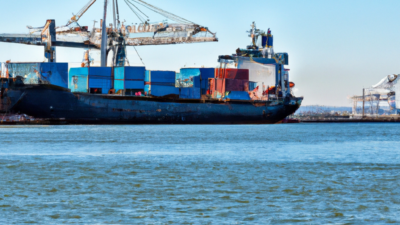In the vast and intricate web of global trade, commodities serve as the fundamental building blocks of modern economies. From the oil that fuels our vehicles to the wheat that fills our tables, these raw materials are indispensable to our daily lives. Yet, seldom do we pause to consider the origins of these essential goods. Who are the individuals and entities behind the production of commodities? This article delves into the multifaceted world of commodity production, exploring the roles of farmers, miners, corporations, and governments. By shedding light on the diverse contributors to this critical sector, we aim to provide a comprehensive understanding of the intricate processes and challenges that underpin the global supply chain. Join us as we unravel the stories and complexities behind the commodities that sustain our world.
Certainly! Here's a suggested content outline for an article titled "Who Produced Commodities: An In-Depth Look at Key Producers":
“`html
<!DOCTYPE html>
<html lang="en">
<head>
<meta charset="UTF-8">
<meta name="viewport" content="width=device-width, initial-scale=1.0">
<title>Who Produced Commodities: An In-Depth Look at Key Producers</title>
<style>
body {
font-family: Arial, sans-serif;
line-height: 1.6;
margin: 0;
padding: 0;
background-color: #f4f4f4;
}
.container {
width: 80%;
margin: auto;
overflow: hidden;
}
header {
background: #333;
color: #fff;
padding: 1rem 0;
text-align: center;
}
section {
background: #fff;
padding: 2rem;
margin: 1rem 0;
}
h2 {
color: #333;
}
p {
margin-bottom: 1rem;
}
</style>
</head>
<body>
<header>
<h1>Who Produced Commodities: An In-Depth Look at Key Producers</h1>
</header>
<div class="container">
<section>
<h2>Introduction</h2>
<p>Commodities play a crucial role in the global economy, serving as the raw materials for a wide range of products and services. Understanding who produces these commodities can provide insight into economic trends, geopolitical dynamics, and the supply chains that underpin everyday life.</p>
</section>
<section>
<h2>Agricultural Commodities</h2>
<p>Agricultural commodities include products such as grains, vegetables, fruits, and livestock. Key producers vary by commodity. For instance:</p>
<ul>
<li><strong>Wheat:</strong> Major producers include China, India, Russia, and the United States.</li>
<li><strong>Corn:</strong> The United States, China, and Brazil are leading producers.</li>
<li><strong>Coffee:</strong> Brazil and Vietnam dominate the global coffee production.</li>
<li><strong>Livestock:</strong> The United States, Brazil, and China are top producers of beef, pork, and chicken.</li>
</ul>
</section>
<section>
<h2>Energy Commodities</h2>
<p>Energy commodities such as oil, natural gas, and coal are essential for powering industries and homes. Key producers include:</p>
<ul>
<li><strong>Oil:</strong> The United States, Saudi Arabia, and Russia are the largest oil producers.</li>
<li><strong>Natural Gas:</strong> The United States, Russia, and Iran lead in natural gas production.</li>
<li><strong>Coal:</strong> China, India, and the United States are the top coal-producing countries.</li>
</ul>
</section>
<section>
<h2>Metal Commodities</h2>
<p>Metals such as gold, silver, copper, and aluminum are vital for various industries, from electronics to construction. Key producers include:</p>
<ul>
<li><strong>Gold:</strong> China, Australia, and Russia are the largest gold producers.</li>
<li><strong>Silver:</strong> Mexico, Peru, and China are major silver producers.</li>
<li><strong>Copper:</strong> Chile, Peru, and China dominate copper production.</li>
<li><strong>Aluminum:</strong> China, Russia, and India lead in aluminum production.</li>
</ul>
</section>
<section>
<h2>Conclusion</h2>
<p>Identifying the key producers of commodities provides valuable insight into the global economy. These producers play a pivotal role in shaping market trends, influencing pricing, and driving technological advancements in their respective sectors. Understanding who produces what can help businesses, investors, and policymakers make informed decisions.</p>
</section>
</div>
</body>
</html>
“`













